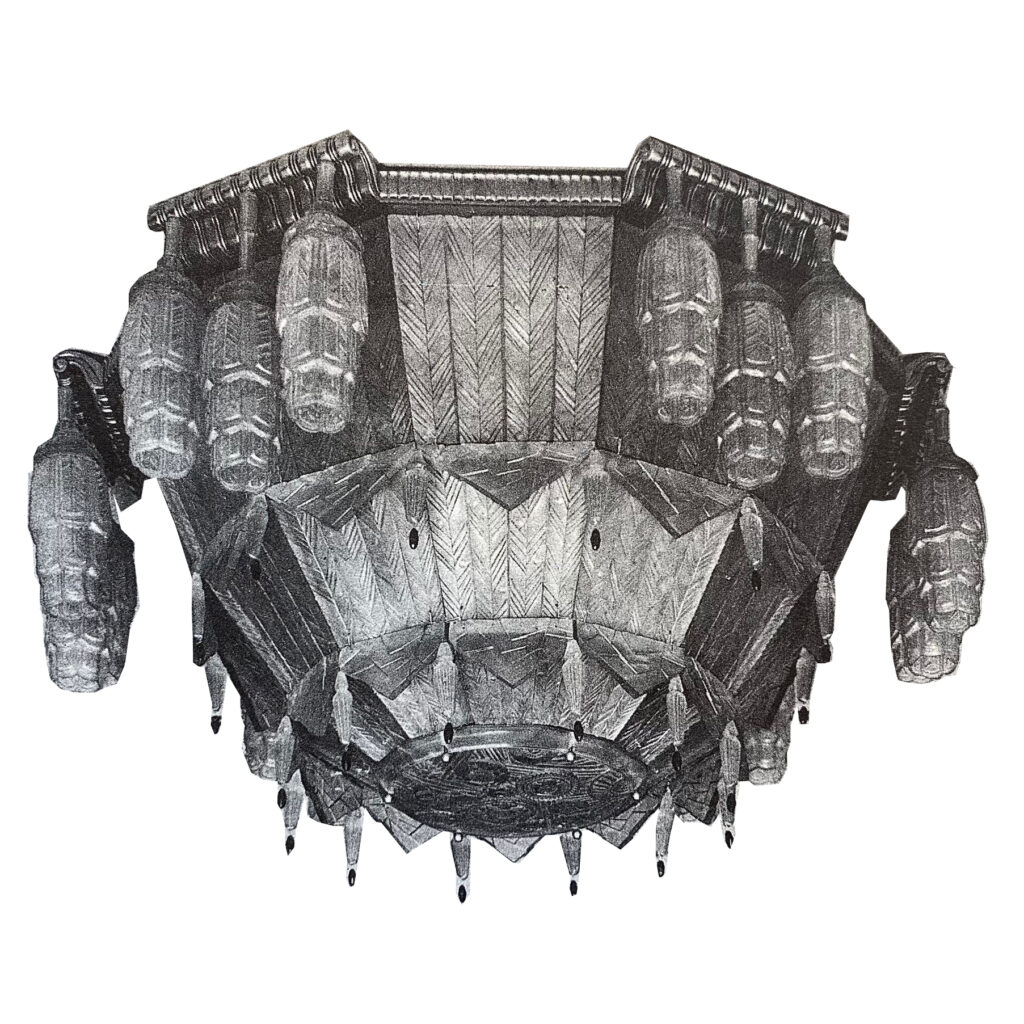Paul Follot

(1877-1941)
In 1923, after working in the arts and crafts sector for twenty-five years, Paul Follot took over the management of the Pomone art and design studio, which was affiliated with the Bon Marché department store in Paris. His career had many similarities to those of Dufrène and Tony Selmersheim. All three artists were extremely productive, but as they also took on administrative responsibility, they slowly moved more and more away from practical design work.
Before taking over Pomone, Follot had exhibited numerous interior furnishings and objects at the Autumn Salon and through the Societé des Artistes Décorateurs, including his chandeliers and floor lamps, which had fabric or glass shades and were mounted on lacquered wood or wrought iron feet. Edgar Brandt carried out the wrought iron work for Follot. In 1925, some lamps by Follot appeared in the Pomone Pavilion and in the vestibule of the French Pavilion.
They carried umbrellas made of alabaster, onyx or Venetian glass. Follot’s style was very much influenced by historicism; it was not for nothing that he had a particular preference for the Pre-Raphaelites. Even in its boldest designs, the ‘Style ’25< only seems like a paraphrase of conservative sentiments. A mixture of tradition and Art Nouveau predominated. His most important lighting designs date from around the turn of the century.
Source: Alastair Duncan, Lampen Lüster Leuchter, Jugendstil Art Déco, Prestel-Verlag, München 1979, p. 169-170.

RSA Antiquitäten Wiesbaden is your antiques dealer in the Rhine-Main area. A large selection of original Art Deco, Biedermeier and Baroque furniture: high quality and exclusive. At RSA Antiquitäten Wiesbaden you can expect a large selection of expertly restored antiques. Exhibits from the Louis Seize, Biedermeier, and Art Deco periods are available.
The following artist glossary: Pierre Chareau

-
RSA Antiquitäten Wiesbaden
-
Taunusstraße 34
65183 Wiesbaden -
+49 611 5 29 05 70
-
+49 170 7 83 01 13
-
info@antiquitaeten-wiesbaden.de
-
Mondayclosed
-
Tuesday - Friday12 a.m. - 6 p.m.
-
Saturday10 a.m. - 4 p.m.